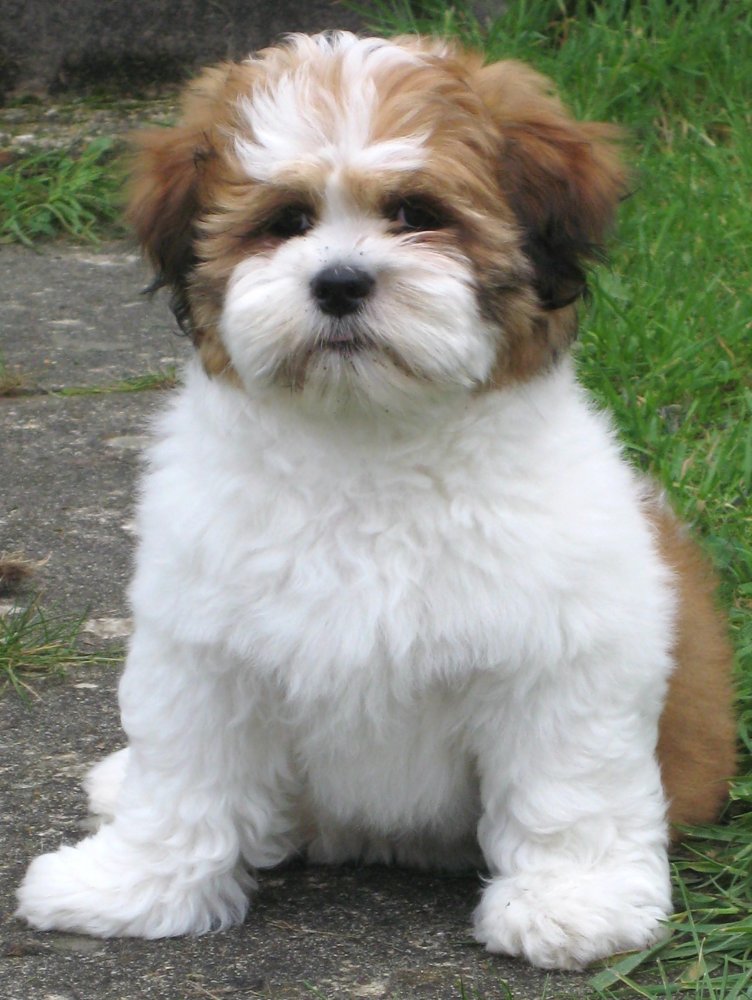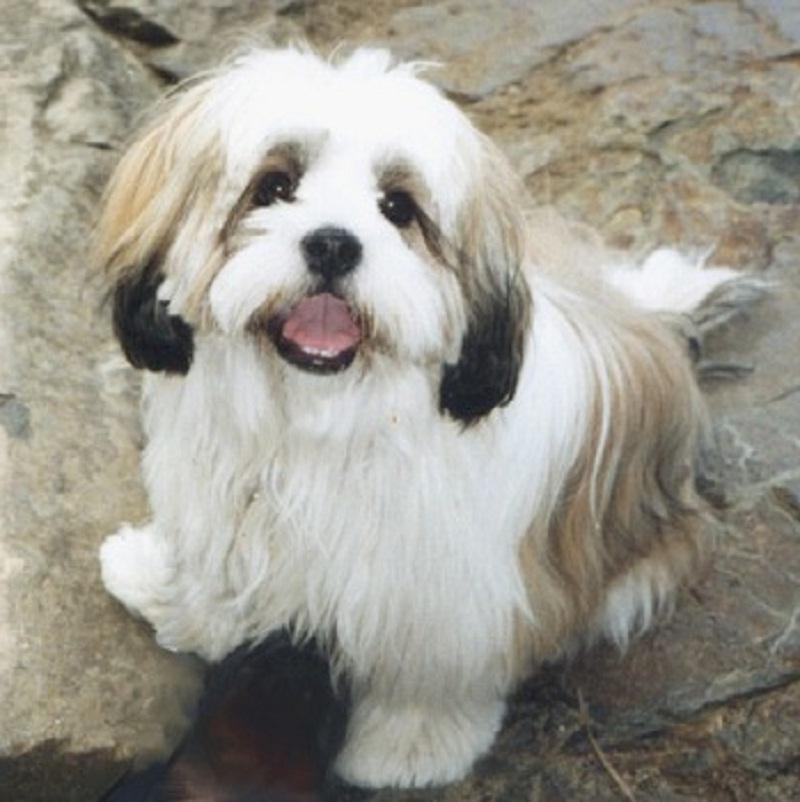- Breed Category: Non-sporting group
- Country of Origin: Tibet
- Average Height: 25-28 cm (10-11 inches)
- Average Weight: 5-8 kg (11-18 pounds)
- Average Life Span: 12-15 years
- Grooming Requirements: High; regular brushing needed
- Exercise Requirements: Moderate; daily walks
- Coat Type: Long, dense, straight
- Coat Color Variations: Gold, white, black, and more
- Shedding Level: Low
- Ear Type: Pendant
- Tail Type: Curled over back
- Temperament: Loyal, alert, independent
- Intelligence Level: Moderate
- Barking Tendency: Moderate
- Compatibility with Children: Good with older children
- Compatibility with Other Pets: Generally good
- Training Ease: Can be stubborn
- Common Health Issues: Hip dysplasia, eye disorders
- Dietary Needs: Balanced diet, avoid overfeeding
- Energy Level: Moderate
- Drooling Tendency: Low
- Sensitivity to Weather: Sensitive to heat
- Overall Maintenance Level: High
- Original Purpose: Monastery watchdog
- Year of Recognition by Kennel Clubs: 1935
- Apartment Friendly: Yes
- Best Suited For: Families, singles, seniors
- Cost of Ownership: Moderate to high
- Unique Traits: Lion-like appearance
- Cultural Significance: Sacred in Tibetan culture
- Popularity Rank: Moderate
Ever found yourself wondering if a small dog can be both a loyal companion and a vigilant watchdog? Enter the Lhasa Apso. This breed, with its origins in the mystical mountains of Tibet, has been charming dog lovers for centuries. Known for their long, flowing coats and confident demeanour, Lhasa Apsos are more than just a pretty face. They were originally bred to guard Tibetan monasteries, which explains their keen sense of awareness and protective nature.
In this article, we’ll dive into what makes the Lhasa Apso unique. From their rich history to their distinct characteristics and care needs, you’ll discover why this breed might just be the perfect fit for your home.
History and Origin of the Lhasa Apso

Early Development of the Breed
The Lhasa Apso’s journey began in the remote, rugged landscapes of Tibet. This breed was developed over centuries, carefully bred by Tibetan monks and nobility. Their goal was to create a dog that was not only a loyal companion but also a vigilant guardian. The Lhasa Apso’s distinctive long coat was perfect for the harsh Tibetan climate, providing warmth and protection.
Role in Tibetan Monasteries
In the serene halls of Tibetan monasteries, the Lhasa Apso played a crucial role. These small yet mighty dogs were entrusted with the task of alerting monks to any intruders. Their keen senses and alert nature made them ideal watchdogs. Beyond their guarding duties, they were cherished companions, offering comfort and companionship to the monks.
Key Historical Figures and Events
Throughout history, the Lhasa Apso has been associated with Tibetan nobility and spiritual leaders. They were often given as gifts to visiting dignitaries, symbolising peace and prosperity. This tradition helped spread the breed beyond Tibet, eventually reaching the Western world, where they continue to be adored for their unique blend of charm and vigilance.
Physical Characteristics of the Lhasa Apso

Appearance
The Lhasa Apso is a small yet sturdy dog, typically weighing between 5 to 8 kilograms and standing about 25 to 28 centimetres tall. Their most striking feature is their long, flowing coat, which can come in a variety of colours, including gold, cream, and honey. Some even sport a mix of black, white, and brown, giving them a unique, eye-catching appearance. Their coat isn’t just for show; it served as protection against the harsh Tibetan climate.
Unique Physical Traits
One of the standout traits of the Lhasa Apso is their distinctive facial expression, often described as “lion-like.” This is due to their dark, almond-shaped eyes and a slightly pushed-in nose. Their ears are feathered and hang down, adding to their regal look. Despite their small size, they have a surprisingly sturdy build, which contributes to their confident and sometimes independent nature.
Temperament and Behaviour of the Lhasa Apso

Typical Personality Traits
The Lhasa Apso is a fascinating blend of loyalty and independence. They’re fiercely devoted to their families, often forming strong bonds with their human companions. Yet, they also have a streak of independence, which means they can be quite content spending time on their own. This breed is known for its alertness, always keeping an eye on its surroundings, a trait that harks back to its days as a monastery guardian.
Suitability as a Family Pet and Companion Dog
When it comes to being a family pet, the Lhasa Apso ticks many boxes. They’re small enough to fit comfortably in most homes, yet their personality is big enough to fill any room. They thrive on companionship and are happiest when they’re part of family activities. Their loyalty makes them excellent companions, always ready to offer comfort and affection.
Interaction with Children and Other Animals
Lhasa Apsos generally get along well with children, especially if they’re raised together. They’re patient and gentle, making them suitable playmates for kids. However, like any dog, they should be supervised around young children to ensure respectful interactions. With other animals, they can be a bit reserved at first, but with proper socialisation, they usually adapt well and can coexist peacefully.
Training and Exercise Needs of the Lhasa Apso
Importance of Early Training and Socialisation
Getting a head start on training and socialisation is crucial for Lhasa Apsos. These little guardians have a mind of their own, so early training helps channel their natural instincts in a positive way. Socialising them with different people, pets, and environments from a young age ensures they grow into well-rounded adults. This not only makes them more adaptable but also helps curb any potential behavioural issues.
Recommended Training Techniques
When it comes to training, positive reinforcement is the way to go. Lhasa Apsos respond well to treats, praise, and play. Keep training sessions short and engaging to hold their attention. Consistency is key, so make sure everyone in the household is on the same page with commands and rules. Patience and persistence will pay off, turning your Lhasa Apso into a well-behaved companion.
Daily Exercise Requirements and Activities
Despite their small size, Lhasa Apsos have a fair bit of energy. A couple of short walks each day, combined with some playtime, usually does the trick. They enjoy activities like fetch, puzzle toys, and even agility courses. These not only keep them physically fit but also mentally stimulated. Just remember, they’re not built for long-distance running, so keep exercise sessions moderate.
Health and Lifespan of the Lhasa Apso

Common Health Issues
Lhasa Apsos are generally healthy, but like any breed, they can be prone to certain health issues. Common concerns include hip dysplasia, patellar luxation, and eye disorders such as progressive retinal atrophy. Regular vet check-ups are essential to catch any potential problems early.
Average Lifespan and Health Tips
With proper care, a Lhasa Apso can live between 12 to 15 years. To keep them healthy, a balanced diet and regular exercise are crucial. Their long coat requires frequent grooming to prevent matting and skin issues. Regular dental care is also important, as small breeds can be prone to dental problems.
Preventative Care Recommendations
- Schedule regular veterinary visits for vaccinations and health screenings.
- Maintain a consistent grooming routine to keep their coat and skin healthy.
- Provide a balanced diet tailored to their age and activity level.
- Ensure they get regular exercise to maintain a healthy weight.
- Brush their teeth regularly to prevent dental issues.
Grooming and Maintenance of the Lhasa Apso
Coat Care and Grooming Routines
The Lhasa Apso’s luxurious coat is one of its most defining features, but it does require regular attention. A consistent grooming routine is essential to keep their coat looking its best. Aim to brush their coat several times a week to prevent tangles and matting. A slicker brush and a comb are your best friends here. Regular baths, about once a month, help keep their coat clean and shiny. Don’t forget to check their ears and trim their nails regularly.
Shedding and Seasonal Grooming Tips
While Lhasa Apsos are considered low shedders, they do experience some seasonal shedding. During these times, you might notice more hair around the house. Increase the frequency of brushing to manage this. In warmer months, some owners opt for a shorter “puppy cut” to keep their Lhasa comfortable. This not only helps with temperature regulation but also makes grooming more manageable. Always ensure their coat is dry after a bath to prevent skin issues.
Diet and Nutrition for the Lhasa Apso

Nutritional Needs for Optimal Health
Feeding your Lhasa Apso the right diet is crucial for their health and happiness. These little guys need a balanced diet rich in proteins, healthy fats, and essential vitamins. Look for high-quality dog food that lists meat as the first ingredient. Omega-3 and Omega-6 fatty acids are also important for maintaining their luxurious coat and overall well-being.
Foods to Include and Avoid
Include lean meats like chicken or turkey, along with vegetables such as carrots and peas. Whole grains like brown rice can be a good source of energy. Avoid foods high in fillers, artificial preservatives, and excessive grains. Steer clear of chocolate, grapes, and onions, as these can be toxic to dogs.
Feeding Schedules and Portion Recommendations
Stick to a regular feeding schedule to keep your Lhasa Apso’s digestive system in check. Typically, two meals a day works well for adult dogs. Puppies may need three to four smaller meals. Portion sizes depend on their age, weight, and activity level, so consult your vet for personalised advice. Always ensure fresh water is available.
Fun Facts and Trivia about the Lhasa Apso
Interesting Tidbits about the Breed
The Lhasa Apso is not just a pretty face; they have a rich history and some fascinating quirks. Did you know that their name comes from Lhasa, the capital of Tibet, and “Apso,” which means “bearded” in Tibetan? This breed was considered sacred in Tibet, believed to bring good luck and prosperity. Their keen sense of hearing and alert nature made them perfect watchdogs, a role they still excel at today.
Famous Lhasa Apsos in Media or History
While they may not be as famous as some other breeds, Lhasa Apsos have made their mark in media and history. One notable Lhasa Apso was “Smoky,” who appeared in the 1930s film “The Awful Truth” alongside Cary Grant. In more recent times, the breed has been featured in various TV shows and movies, often portraying the role of a loyal and charming companion. Their unique appearance and personality make them a favourite choice for filmmakers looking to add a touch of elegance and character to their productions.
Final Thoughts
The Lhasa Apso is a charming blend of beauty and vigilance. This breed’s rich history and unique traits make it a fascinating companion for those who appreciate its independent spirit and loyal nature. While their grooming and training needs can be demanding, the rewards of having a Lhasa Apso as a family member are immeasurable. Embrace the journey of caring for this sacred breed, and you’ll find a devoted friend and guardian. Consider welcoming a Lhasa Apso into your home and experience the joy they bring.
